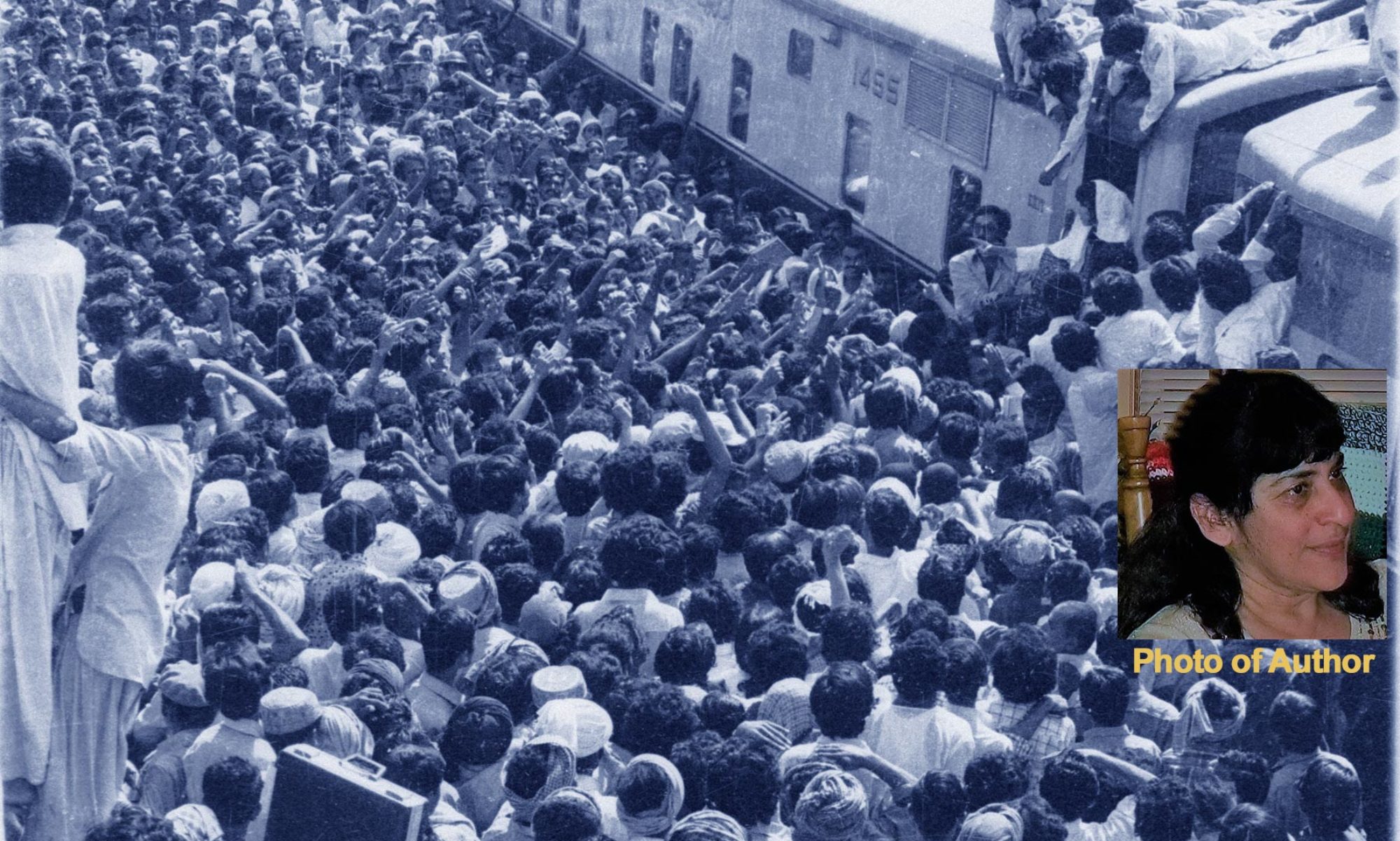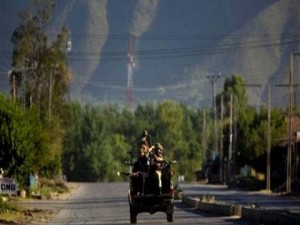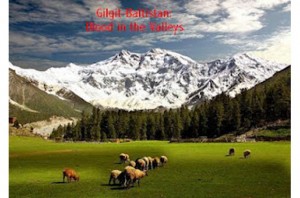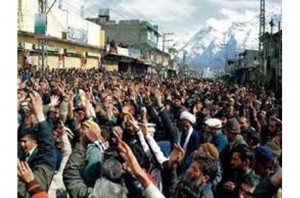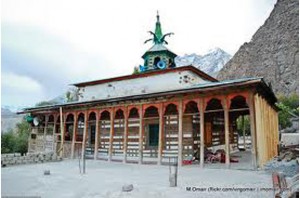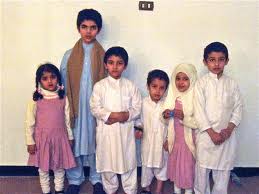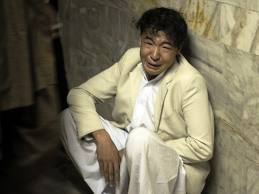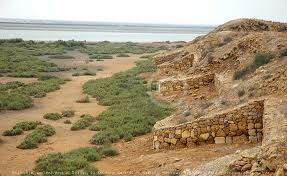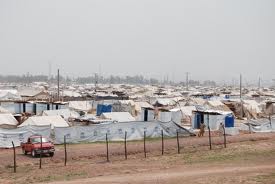
JALOZAI, April 8 – Banmaroo stands in the dust, tears rolling down her cheeks as she recalls how her husband was killed in Pakistan’s latest battle zone on the Afghan border. “He was just a labourer. Firing started. I don’t know who killed him, but I was handed his body in the afternoon. It was in such a rough condition, just pieces,” she said, wiping her face with her green veil.
Too frightened to cope alone and worried that her children would also become caught up in fighting between the army and local warlord Mangal Bagh, she fled. “We felt danger everywhere. If the situation becomes good and our area gets freedom, we’ll go back. We need peace,” she said.
Travelling from her home in Khyber, Banmaroo and her six children arrived at Jalozai, Pakistan’s largest refugee camp, three weeks ago. She is among more than 250,000 people, mostly women and children, Save the Children says have fled the violence since January.
Khyber lies just outside Peshawar in Pakistan’s semi-autonomous tribal belt, on the Afghan border, still considered the world’s premier Al-Qaeda hub despite the killing of Osama bin Laden and the impact of US drone strikes. But the war in Bara, where Banmaroo and her children remember a once-idyllic life, is far murkier than a simple fight between the state and Islamist militants who want to impose sharia law and purge communities of infidels.
Troops have struggled since 2009 to defeat Bagh, a former bus conductor who founded Lashkar-e-Islam, a militia better known for kidnapping and extortion than religion. Now soldiers are stepping up the fight, keen to quell Bara to protect nearby Peshawar, the sprawling city where an increase in bomb and rocket attacks has been linked to the fighting in Khyber.
As a result, thousands of refugees stream into Jalozai everyday. Young men queue up to register in droves, standing or squatting under the burning sun. Security guards armed with sticks swipe queue-jumpers. “Five thousand people are expected to register today. Three days back it was 2,900,” UNHCR field officer Changaiz Mataul Hussain told AFP.
It’s a scene that Jalozai knows only too well. For 26 years, it was home to Afghans fleeing Soviet occupation, civil war and Taliban rule. Then in 2007, six years after the US-led invasion toppled the Taliban and when life in Afghanistan appeared to be improving, Pakistan closed the camp. Afghans were either voluntarily repatriated or told to find new homes.
But when the Pakistani Taliban rose up against the government in late 2007, Pakistan’s own creeping conflict forced Jalozai to re-open. With a capacity of 140,000, according to Hussain, nowhere else offered temporary shelter to so many Pakistanis displaced by conflict.
In 2008, the refugees came from the tribal district of Bajaur, then from neighbouring Mohmand and in 2009 there was a huge influx from the Swat valley, where the army managed to put down a Taliban insurgency. Today, the majority of the 109,515 in the camp are from Bara. They speak of their horror at gun battles, air strikes and mortar rounds destroying houses, but few go into details, fearful of spies.
Life in Jalozai is hard. Residents say there is no electricity, particularly galling at night. Children complain of eating rice day after day. The newest arrivals are ensconced some distance from the ordered blocks of tents protected by fences of plastic sheeting, on a stretch of desolate land where children scramble across the stone-strewn landscape.
It is only in the relative privacy of a tent that Khayalzar, a wild-haired man squatting on his haunches, is prepared to be more candid. “If you’re against Mangal Bagh, you’ll be slaughtered, so everyone is afraid. One of my neighbours was selling hashish. Mangal Bagh people threatened him many times, but he kept on doing it,” he said.
“Then one day, they came, put him inside a vehicle and drove off. On the second day, a headless body was dumped outside the village. Five or six days later, we found the head.” But it is not just the army fighting Lashkar-e-Islam. The militia is also embroiled in deadly turf wars with rivals, including the Pakistani Taliban.
Two suicide attacks outside Lashkar mosques killed 27 people last month in the Tirah valley, a hashish-growing area well outside government control, where Bagh’s turf war with the Taliban is concentrated.
“It’s very complex,” said Rahimullah Yusufzai, a tribal affairs expert. “There is no real goal. The main factor now is to be in control.” But the outcome of the army offensive is also unclear. It is not a sweeping operation as in Swat and despite numerous claims to have cleared other parts of the tribal belt, fighting continues and violence remains a problem.
“Mangal Bagh and the government are two faces of the same coin. We’ve suffered from both sides,” snaps Salma, sitting on the side of a dusty track, a crumpled burqa obscuring her face and body. “Mangal Bagh targets us on the ground and government jets target us from the air,” she says. “Only God can bring peace.”
